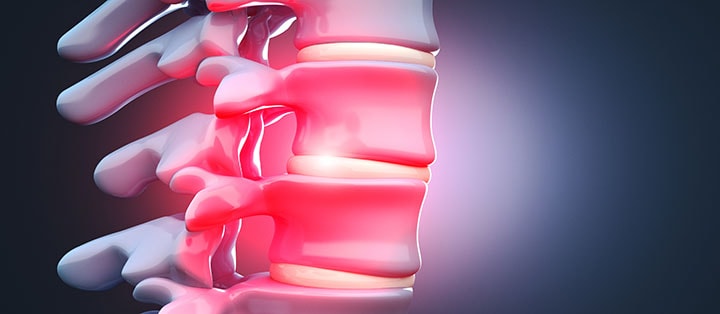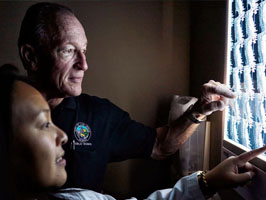The spine is central to human life and one of the most important structures of the body. Made up of precisely-stacked vertebral bones, the spine or “backbone” houses the spinal cord, supports the weight of the upper body and facilitates our movement. Intervertebral discs formed out of cartilage and fibers can be found between most of the spine’s vertebrae. These discs absorb shock and strain while providing necessary cushioning for the spine.
Intervertebral discs have a hard outer casing and a gel-like, liquefied nucleus. The external and internal parts of a disc are mostly comprised of the same materials (water, collagen and proteoglycans), though the amount of fluid is higher in the soft part of the disc than the protective exterior.
These discs are highly susceptible to damage, especially as an individual ages and natural wear and tear placed on the body throughout the years becomes more pronounced. The older a man or a woman gets, the less hydrated their intervertebral discs are. Disc-related difficulties are some of the most common underlying causes of back pain and related discomforts.
A “collapsed disc” is an intervertebral disc that has shrunk. Its height or mass has been greatly reduced, often due to dehydration, and one or more regions of the disc may become significantly decayed. Usually a shrunken disc does not become noticeable until it begins to affect other areas of the spine. Collapsed discs may aggravate the spinal cord or nearby nerves and result in pain and discomfort.
Frequently, collapsed discs occur in the neck (known as the cervical area) or lower (referred to as the lumbar area) regions of the spine. As we go about our daily activities, these areas of the backbone bear a considerable amount of strain while working to support the body’s weight and each of our movements.

Collapsed Disc Causes
Usually discs shrink because their fibrous outer wall has deteriorated drastically. The majority of collapsed discs are caused by the body’s natural aging processes. As we age, our vertebrae and intervertebral discs naturally begin to degenerate. Several determinants besides age, however, can cause or exacerbate a collapsed disc. These factors include:• Obesity or significant excess body weight
• Sudden injury or high-impact trauma, such as a motor vehicle accident
• Participation in certain sports, like football or gymnasticsA fall, even from a short height
• Improperly lifting heavy objects
• Smoking
• An unbalanced diet
• Making repeated strenuous movements
If you believe you are at risk for a collapsed disc or other spine-related complications, speak with your doctor about how to maintain life-long spine health. By participating in moderate exercise and making other lifestyle changes, you may be able to lower your chances of sustaining a collapsed disc now or later in life.
Collapsed Disc Symptoms
Most patients do not suspect they have a collapsed disc until the disc begins to compress nearby tissues and disrupt the spinal column’s stability. Some of the symptoms associated with a collapsed disc are:• Chronic nerve pain, due to the collapsed disc placing pressure on nearby nerves.
• Muscle weaknessTingling or pins-and-needles sensations in the affected area and limbs.
• Numbness throughout the affected area and limbsBone spurs.
A collapsed disc may lead to herniated or bulging discs, as well as damage to the spinal cord.

